 Buy Now →
Buy Now → 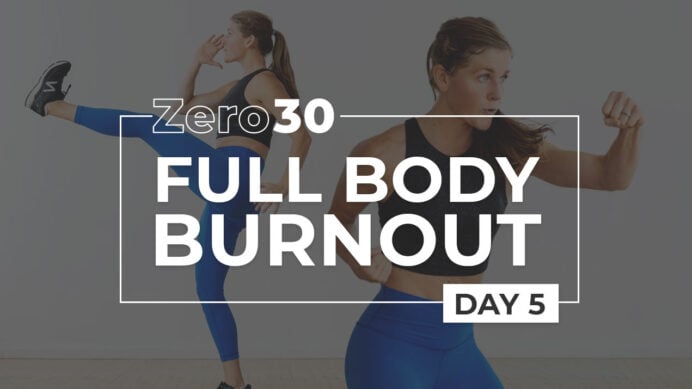
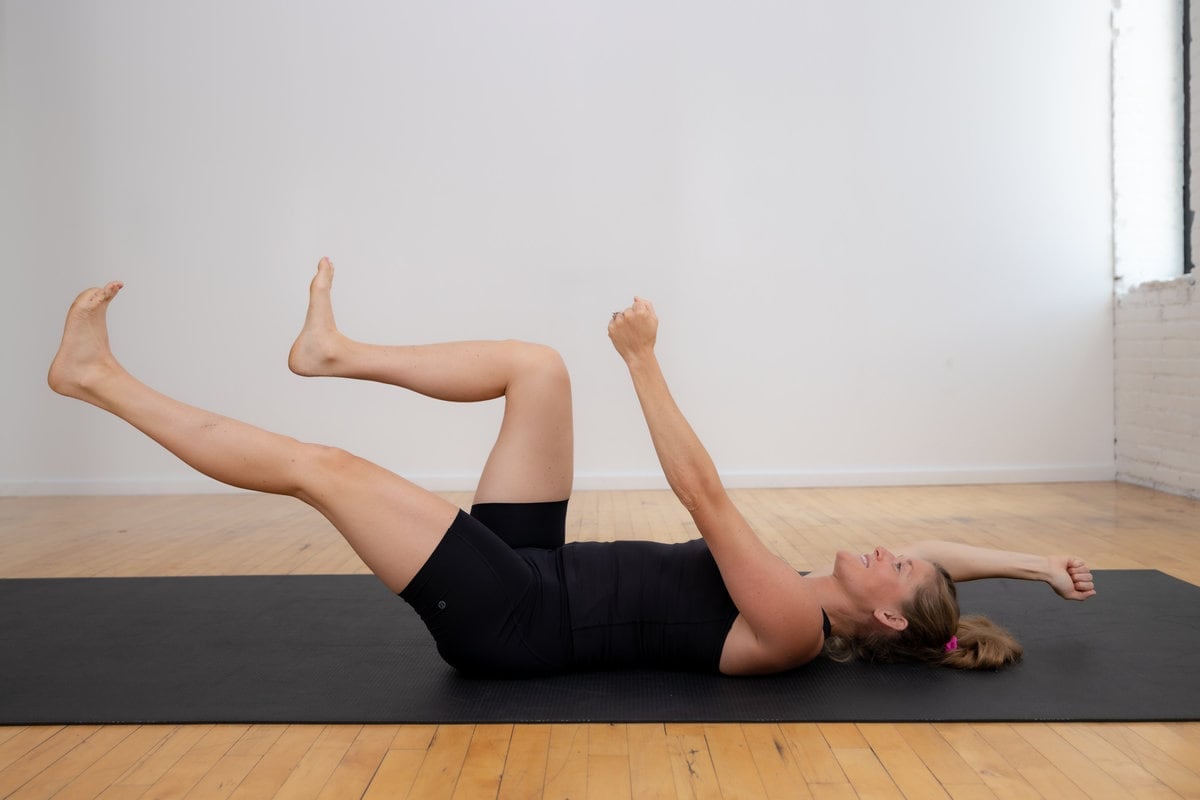
Rebuild core strength after pregnancy with this NO EQUIPMENT Beginner Postpartum Recovery Ab Workout! These ab exercises are designed to safely rebuild your abs after childbirth by targeting the transverse abdominals and pelvic floor muscles, which can be weakened during pregnancy.
Our diastasis recti repair workout is our most popular post on the blog (and has over a million views on YouTube!).
That content clearly resonates with many of you, and you filled my inbox and DMs with requests for more postpartum content when I returned from my maternity leave after having my third baby earlier this year.
So we teamed up with my pelvic floor physical therapist (Dr. Sari Abelson PT, DPT) to develop a series of workouts designed to support you along your postpartum recovery journey (and it’s more than just kegel exercises).
Today’s workout is the first in the series: a no equipment postpartum abs workout for beginners. This is one of the first workouts I did postpartum to start my core recovery process.
Whether you have a newborn or your “baby” is 16, these exercises are a solid foundation for core and pelvic floor strength.
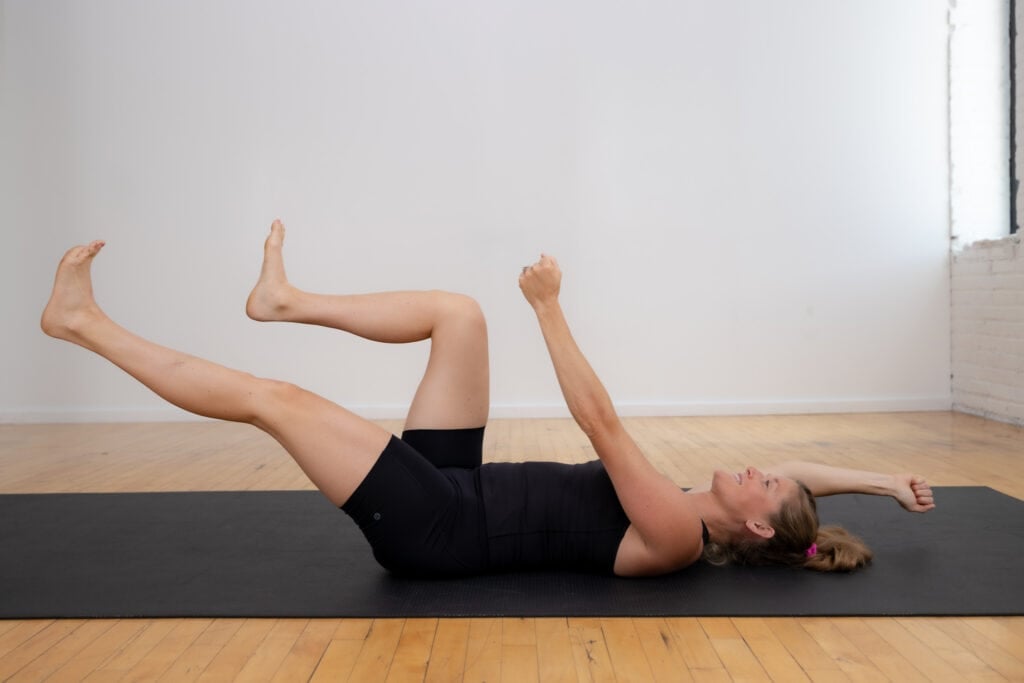
The healing process depends on so many factors, like how active you were during pregnancy, your labor (cesarean section vs. vaginal delivery), perineal tearing, sleep, nutrition – it all plays a role! In general, the first six weeks after delivery are considered a recovery period. This is about the time that your vagina, perineum or C-section incision should be healed, and the uterus should be back to its normal size. Check with your OB-GYN or midwife about what is appropriate for you and your body.
Every postpartum recovery experience is different. I personally started doing these exercises around 2 weeks postpartum. Start where you are and do what you can! Maybe you start by performing the first three exercises for 20-30 seconds, rest and repeat. You can always work up to performing these exercises for 40 seconds.
Assessing for hard vs. soft doming during exercise is a good gauge to determine how your body is managing pressure. Soft doming is when you can press your tissue inward vs. hard doming is when the dome is firm. Hard doming usually signals your tissue is working to its max capacity. Aim for soft doming.
The American College of Obstetricians and Gynecologists (ACOG) says that postpartum exercise can strengthen abdominal muscles, boost energy, relieve stress, promote better sleep and may help prevent mood swings, postpartum depression and anxiety or the “baby blues”.
If it’s an option available to you, I recommend this to everyone who’s been through a pregnancy. I learned so much about my body from my sessions with Dr. Sari (Motion MN). Other reasons to see a pelvic floor PT include symptoms like bladder control/urinary incontinence or fecal incontinence, urinary or fecal urgency, heaviness/pressure, pain or fear with return to intercourse, constipation or issues with bowel movements, or just wanting guidance with return to exercise.
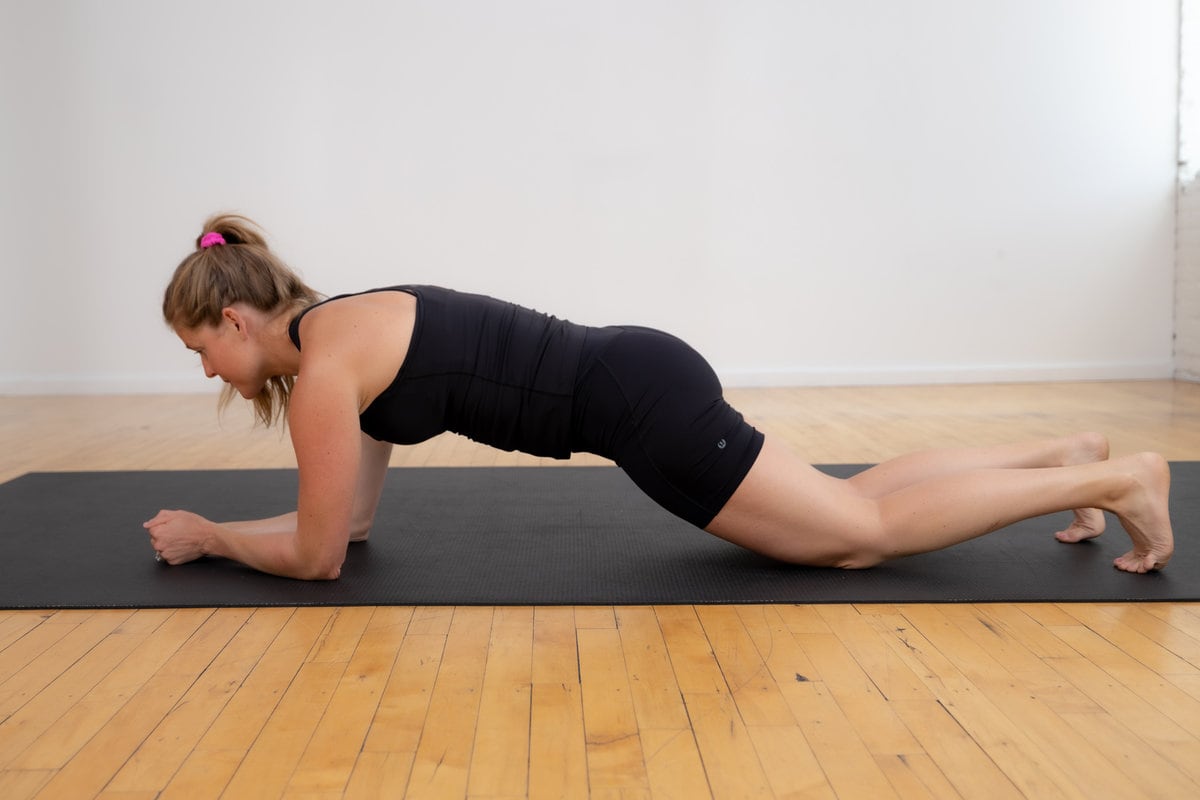
Rebuild your core with 5 BEGINNER postpartum recovery ab exercises – no equipment needed!
These beginner ab exercises are specifically designed to heal diastasis recti, strengthen the pelvic floor, and rebuild your abs after baby.
Add this core repair workout to your postpartum workout routine as you feel capable, starting with 1-2 times a week and scaling up to 3-4 times a week.
No equipment needed, just your bodyweight.
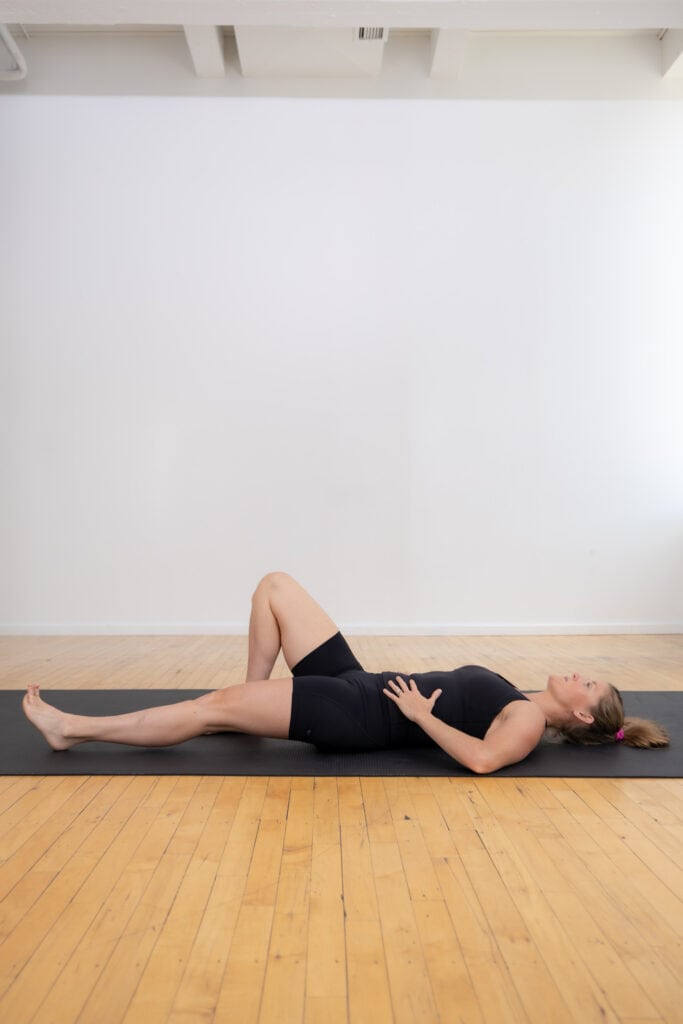
Follow along with the guided BEGINNER Bodyweight Postpartum Recovery Ab Workout on YouTube, led by certified personal trainer and fitness instructor, Lindsey Bomgren.
Your Workout Looks Like This:
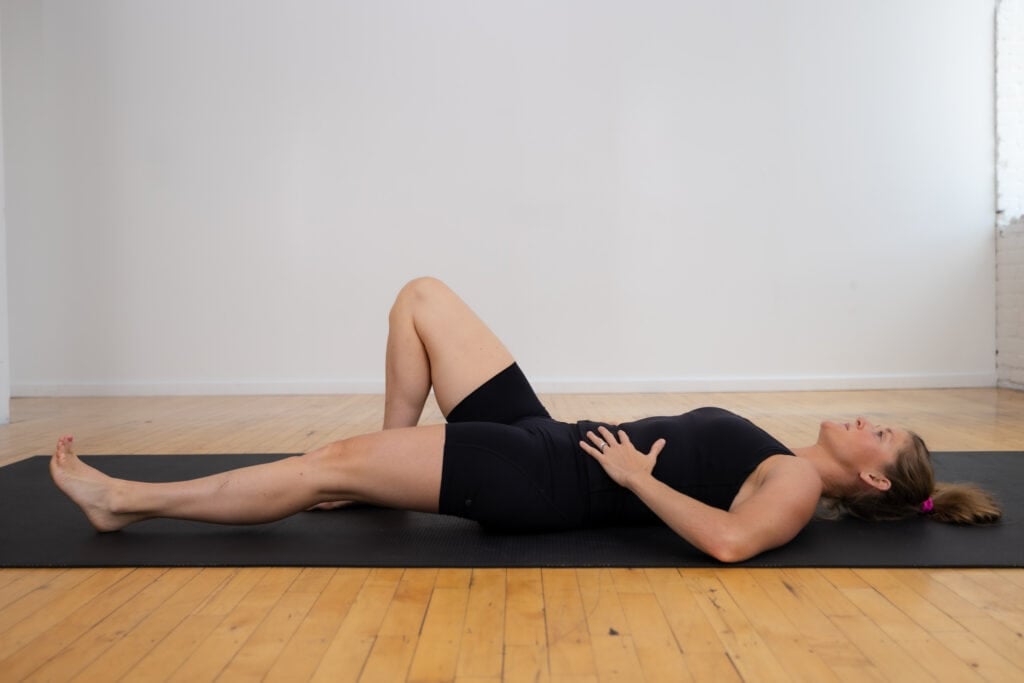
Targets: The deep transverse abdominal muscles (TVA) and pelvic floor muscles. These muscles support your internal organs, your inter-abdominal pressure system, and provide stability and mobility of your lower spine.
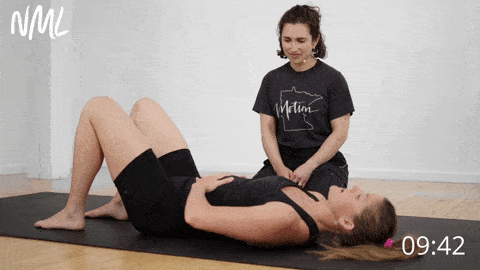
Targets: Deep transverse abdominal muscles (TVA), lower abs and hips.
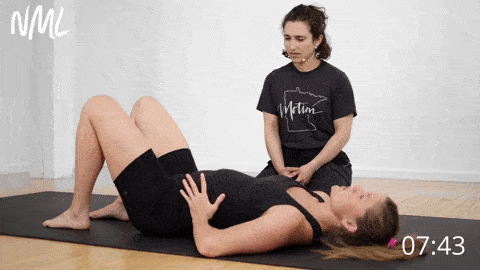
Modification: Take out the leg raise and only perform the heel slides.
Targets: Deep transverse abdominal muscles (TVA), lower abs and hips.
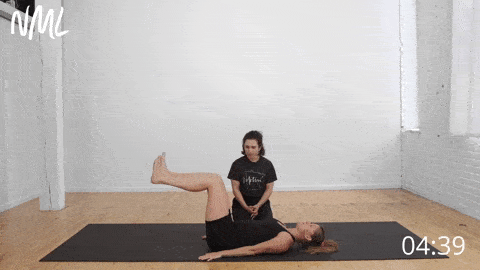
Modification: The closer your knees are to your chest, the easier this ab exercise will be. The farther your knees are from your chest, the more intense this will be.
Targets: Transverse abdomen (deep core muscles below your rectus abdomen or six pack ab muscles), lower abs and hip flexors.
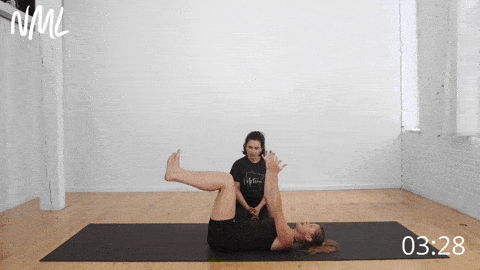
Modification: Reduce range of motion of your legs and arms to reduce the intensity of this exercise.
Targets: Every muscle in your core; including: deep transverse abdomen muscles, rectus abdomens (six pack ab muscles), oblique muscles and shoulders.
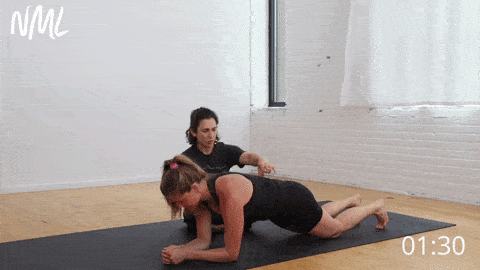
Modification: Take your plank up to a raised surface (chair, bench or countertop) to reduce the intensity.
 Buy Now →
Buy Now →  Buy Now →
Buy Now →  Buy Now →
Buy Now → 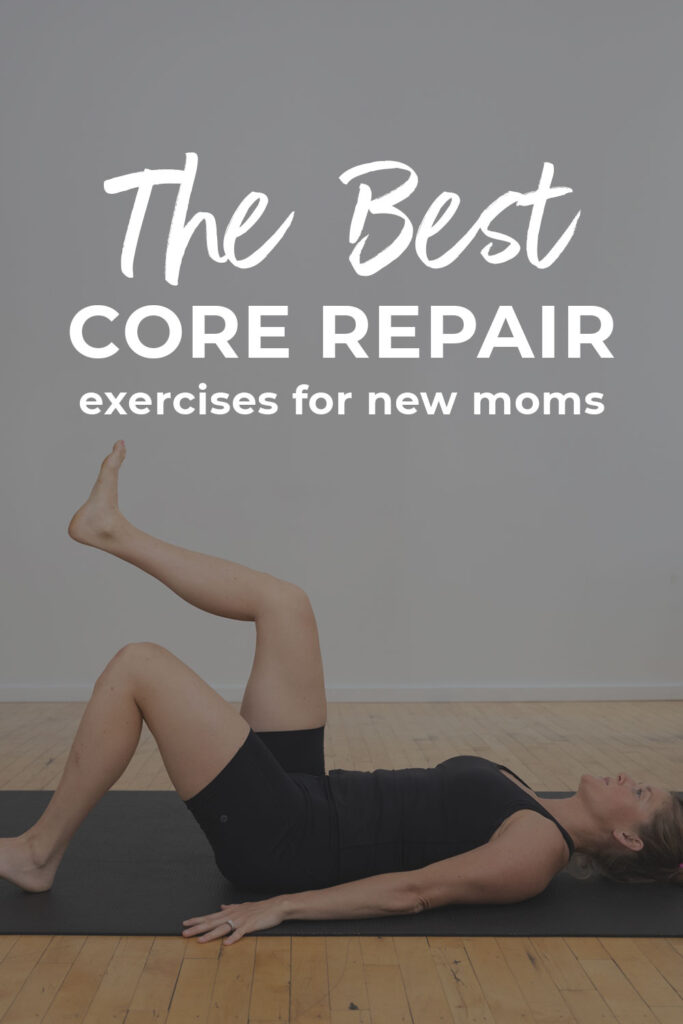
This post includes affiliate links. I do earn a commission for products purchased using these links (at no additional cost to you). Thank you for supporting Nourish Move Love, making the content you see on this blog possible.